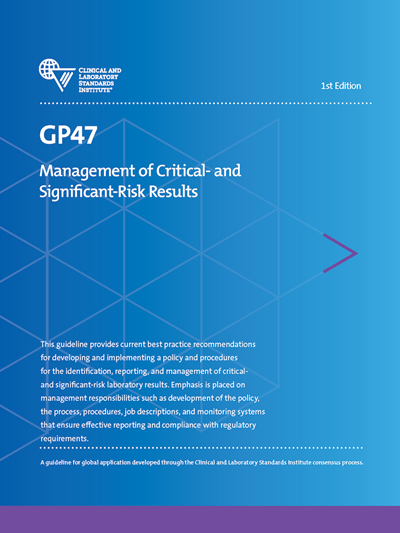CLSI GP47
Management of Critical- and Significant-Risk Results, 1st Edition
This guideline provides current best practice recommendations for developing and implementing a policy and procedures for the identification, reporting, and management of critical- and significant-risk laboratory results. Emphasis is placed on management responsibilities such as development of the policy, the process, procedures, job descriptions, and monitoring systems that ensure effective reporting and compliance with regulatory requirements.
An executive summary of GP47 is included with this guideline.
This document is available in electronic format only.
This reaffirmed document has been reviewed and confirmed as suitable to remain published without revision to content, as of September 2019. The document’s next scheduled review is generally five years after the reaffirmation date.
Member price:
List Price:Details
Chairholder: Andrew N. Young, MD, PhD
Date of Publication: October 30, 2015
Order Code PDF: CLSI GP47Ed1E
ISBN Number: 1-56238-920-3
Order Code Print: print not available
Edition: First
Pages: 100
CLSI GP47 Additional Details
If interested in ordering larger quantities of this document in print, please contact us here.

